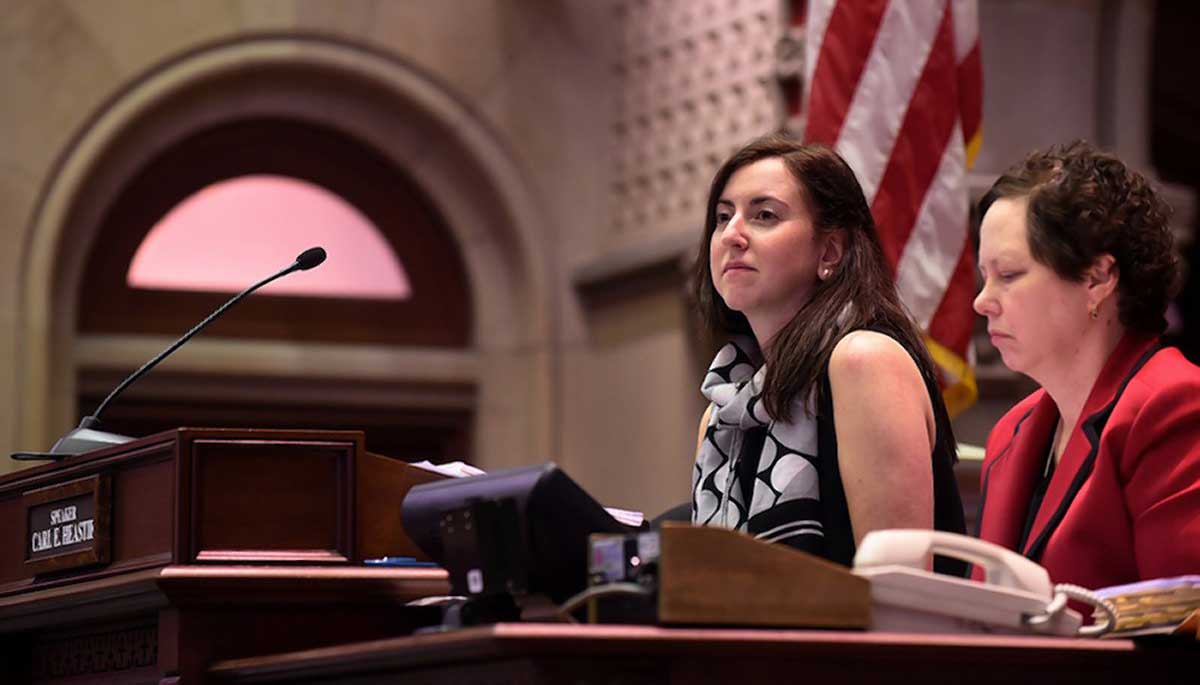A new bill requiring the New York State Department of Transportation (DOT) to create a 20-year State Transportation Plan with updates every five years in line with current MTA Capital Plans passed the Assembly Tuesday with overwhelming bipartisan support.
The legislation (A4880) — introduced to the Assembly in February — also makes certain that the plan is maintained on a public website to ensure transparency, according to state Assemblywoman Nily Rozic, who authored the legislation.
“New York taxpayers deserve an accountable capital planning process of their state transportation and infrastructure dollars,” said Rozic. “Without details, our ability to participate in decisions about spending on state roads, bridges as well as bus and rail infrastructure is significantly curtailed. This legislation would ensure the transparency that the public deserves.”
Unlike the MTA, the state DOT is not statutorily required to submit a capital plan. Although a Memorandum of Understanding was approved in 2009, there is not currently a publicly reviewable five-year or 20-year capital plan for DOT, according to Rozic. Historically, the DOT and MTA five-year capital plans have been negotiated and approved simultaneously; recently, that process has differed.
Supporters of the legislation applauded Rozic and the Legislature for passing the amendment.
Nick Sifuentes, executive director of the Tri-State Transportation Campaign, said the passage of the bill sends a clear message that the state is serious about a real, long-term plan to improve transportation infrastructure.
“We are glad to see the Legislature move our state’s transportation planning in a more transparent direction. It’s long past time that the state’s transportation plan include a capital plan that shows the allocation of public funds and a transparency component so that New Yorkers can actively participate in the planning process,” said Fuentes.
Julie Tighe, president of the New York League of Conservation Voters, noted the importance of the state making informed decisions to reduce gas emissions and urging the Senate to act on the bill before the end of the session.
“Assembly member Rozic is a leader on the future of transportation policy. The transportation sector is the No. 1 contributor to climate change in New York,” said Tighe. “As we plan for capital projects into the future, we must fold in ways to encourage alternative, less polluting forms of transportation, including pedestrian and cycling infrastructure.”
According to the NYPIRG Straphangers Campaign, the process will allow for public input, and ultimately results in a plan that the public can use to hold the MTA accountable.
“Multi-year capital plans are important for transportation planning because they provide public accountability and clarity as to how public dollars will be spent. New York state’s largest public authority, the Metropolitan Transportation Authority, is statutorily required to produce a five-year capital program detailing a list of infrastructure and capital projects it plans to complete,” said Jaqi Cohen, campaign coordinator of NYPIRG Straphangers Campaign. “There is no reason why New York state’s Department of Transportation, which oversees transportation projects all over New York state, shouldn’t do the same.”





































